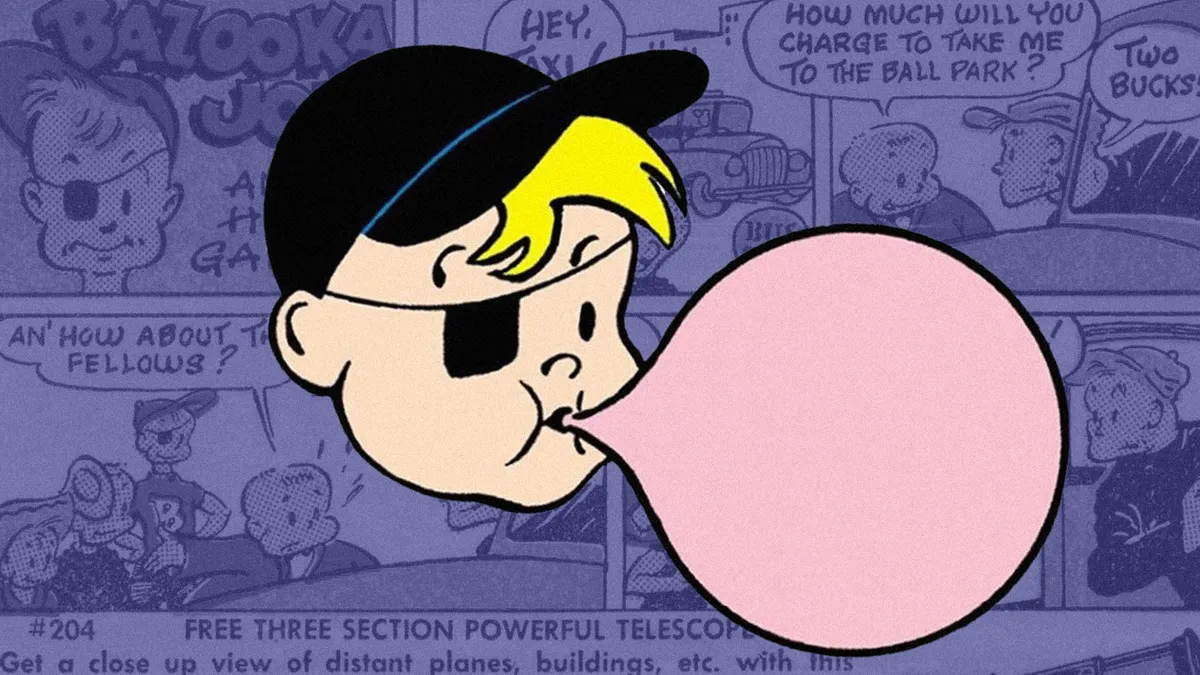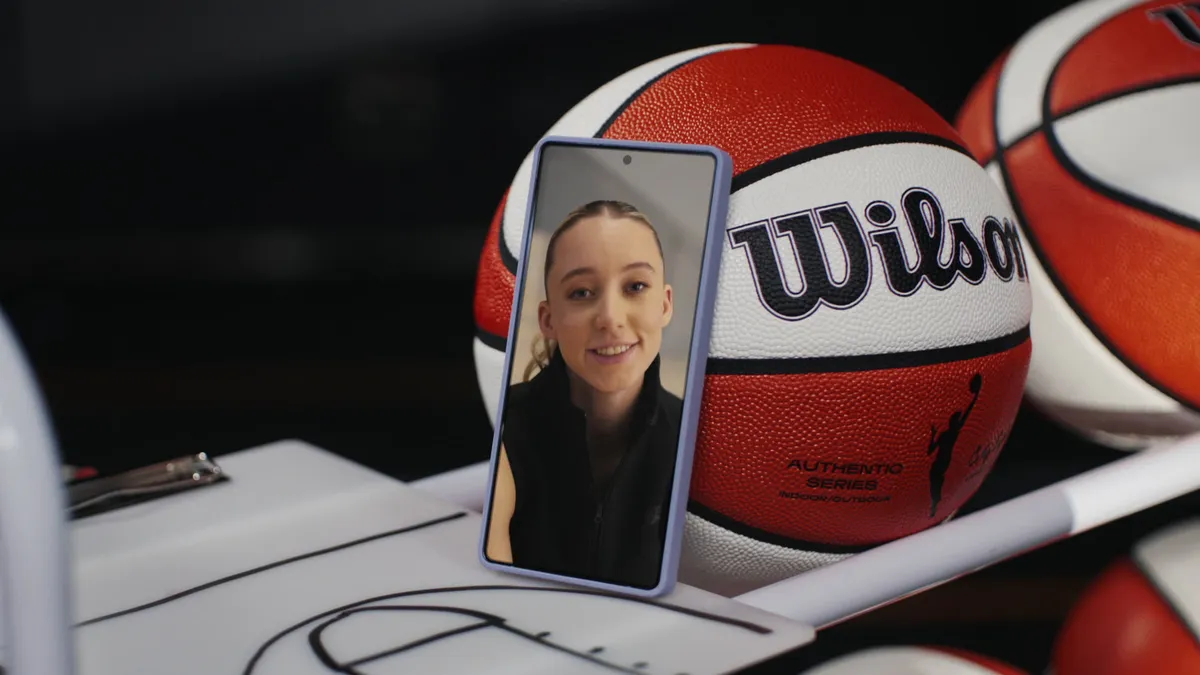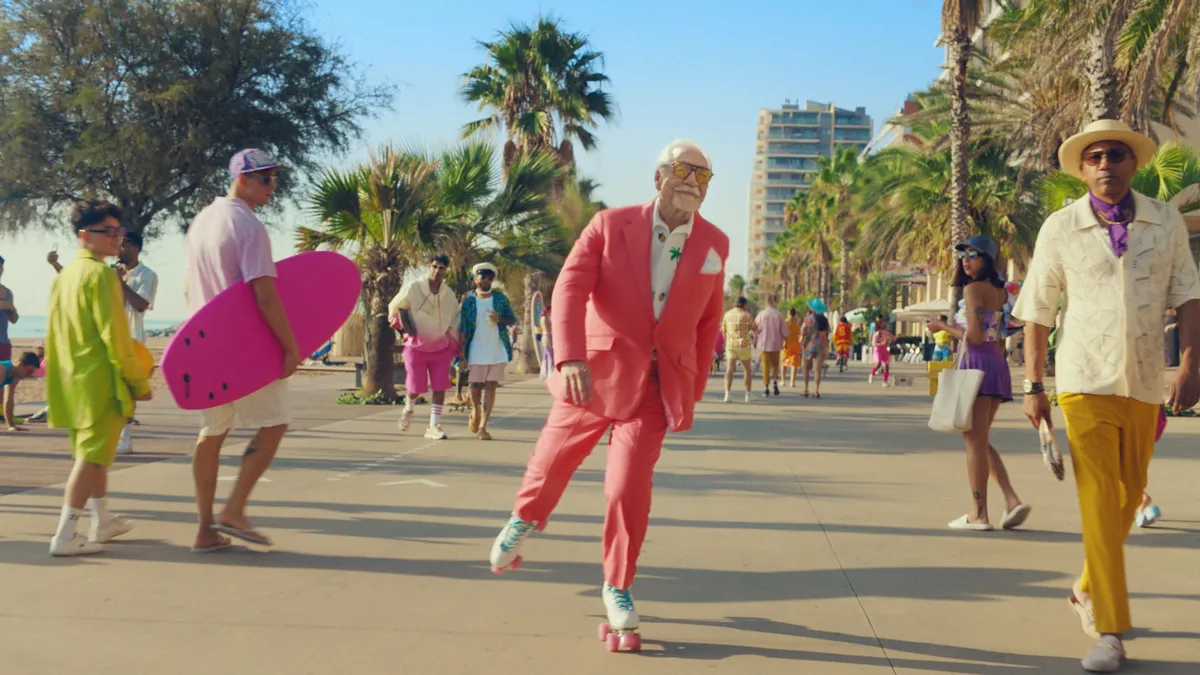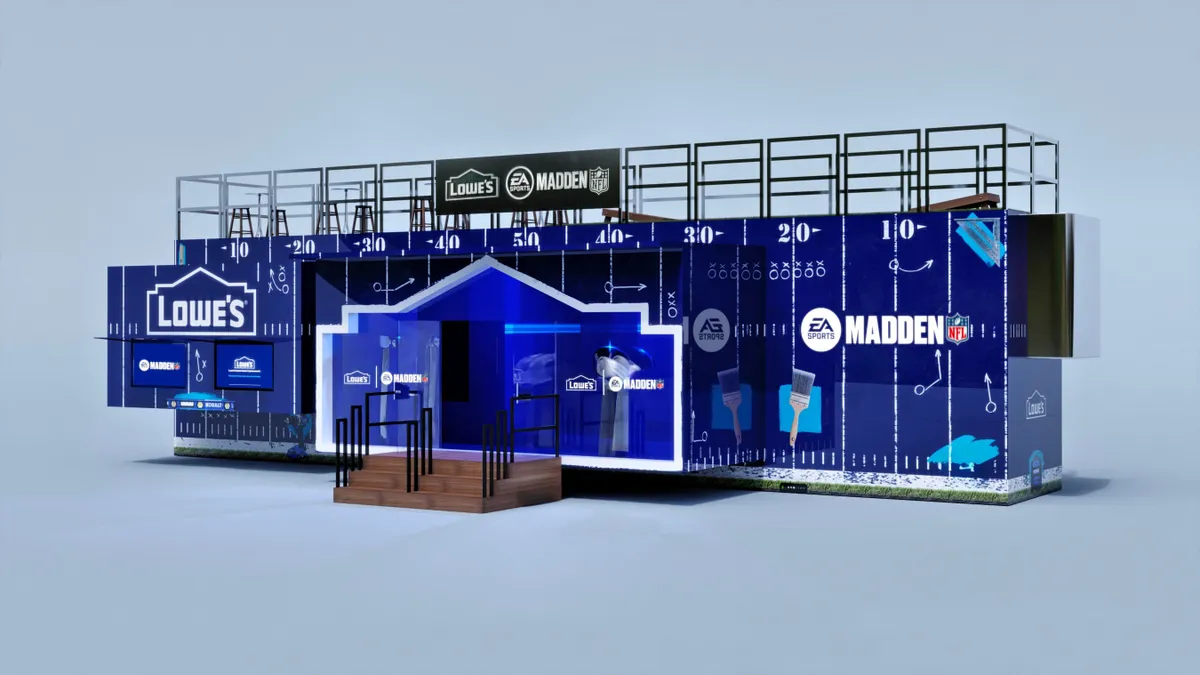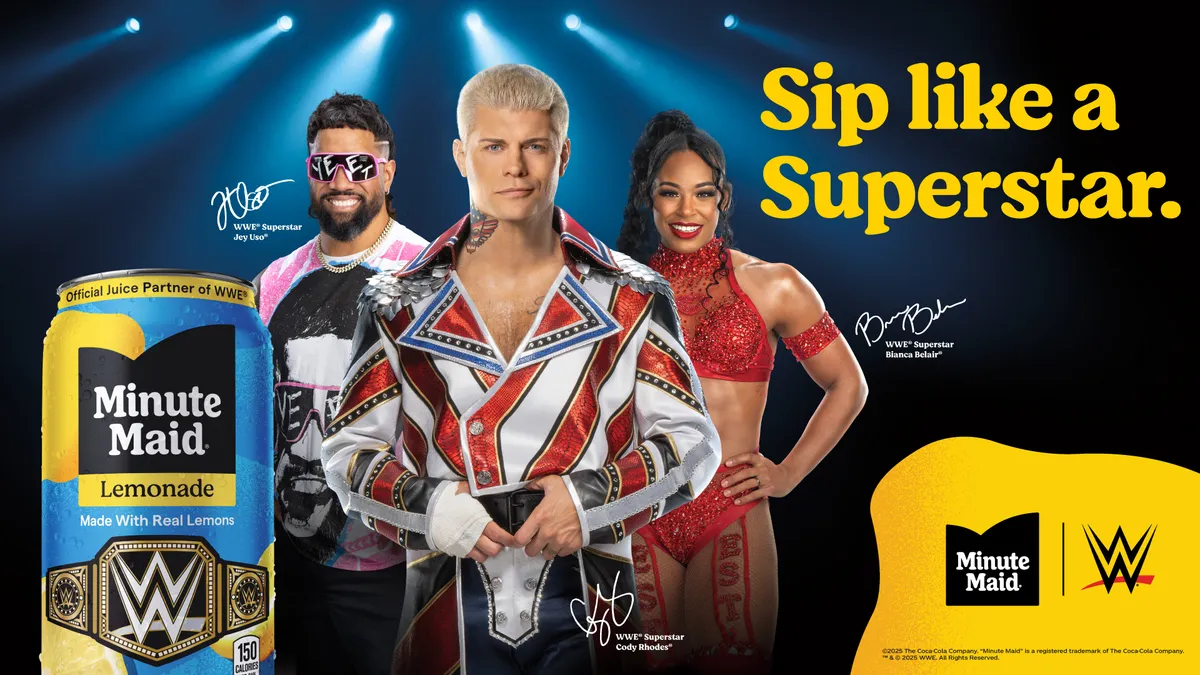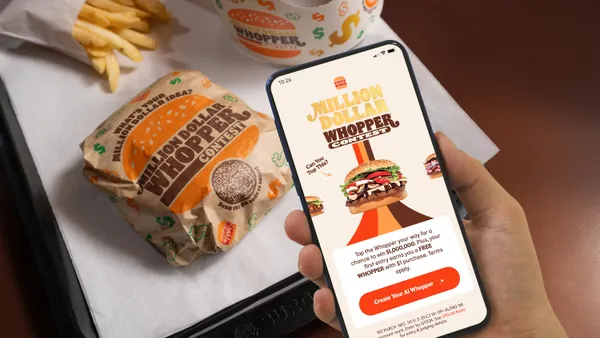In 1947, Topps created a bright pink bubble gum square with an initially tough chew, a sweet smell and powerful sugary taste of fruit and cotton candy. A few years later, the company added to its wrapper the now iconic comic featuring Bazooka Joe and his gang.
Now, 76 years later, consumers are still chewing those hard-then-soft sweet squares and rectangles of Bazooka Gum. And while the confectionery space and consumer trends have changed considerably in the last three generations, Original Bazooka Bubble Gum has not.
Rebecca Silberfarb, vice president of marketing in the Americas for Bazooka Candy Brands, said Bazooka has been able to maintain its iconic nature through the decades.
“What people knew about it 75 years ago, or in their childhood however many years ago that was, is still true to the core of the brand,” she said. “We are a brand that brings, what we call in our company, edible entertainment.”
The children of today — as well as the children of yesterday — open the red, white and blue package of gum, read the comic, and chew the gum until it’s soft enough to try to blow a bubble, she said. The gum’s original formula is the same, the packaging is similar to that of decades ago, and eyepatched Bazooka Joe and his gang are still making people groan with comics full of dad jokes and sometimes head-scratching fortunes — like “You may want to wash your old sneakers.”
From a corporate standpoint, the company has been through a variety of changes. Bazooka was created by Topps, which also morphed into a well-known trading card company. Topps’ candy division became known as Bazooka Candy Brands in 2009. Through the years, it added brands including Ring Pop — its biggest seller — and Push Pop. Bazooka is actually one of the company’s smaller brands, Silberfarb said.
While the newer brands meet specific trends more relevant to younger candy consumers, Silberfarb said that the company constantly works to make Bazooka stay trendy. They’ve tried adding graffiti-style graphics to the wrappers. They’ve tried tucking puzzles in the wrappers instead of comics. They’ve gotten the brand — and Bazooka Joe — on social media. They added sugar-free varieties. They devised new pack sizes and ways to buy the gum.
But for the most part, the company found their consumers wanted the classic Bazooka gum they’d known for years. Some of the less popular changes were walked back, while a few new innovations — like flavors and sugar-free gum stayed around.
“It's kind of keeping true to our consumer and what the product is, but really bringing it along for the ride as times change,” she said.
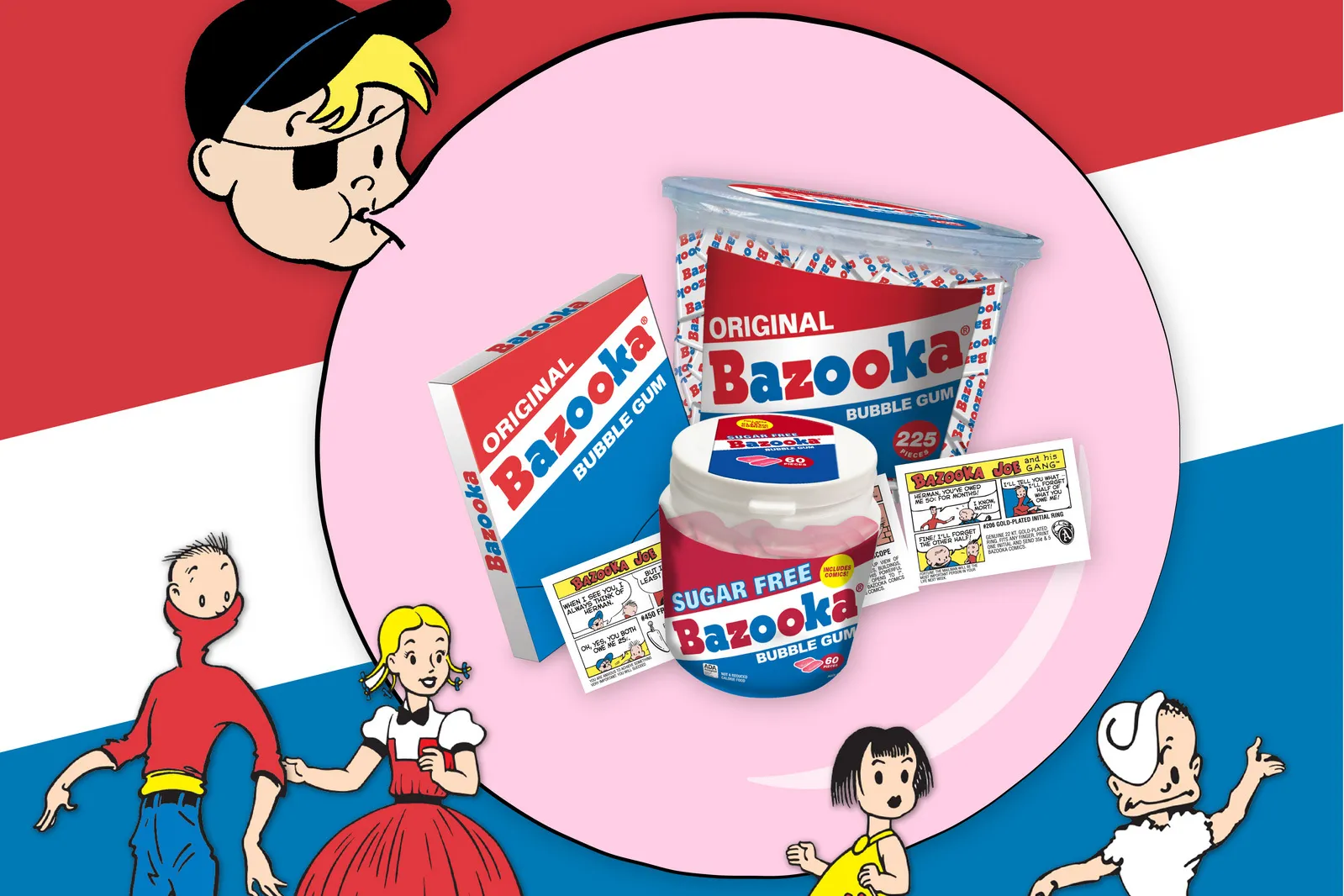
From market leader to king of nostalgia
To celebrate its diamond jubilee last year, Bazooka made a short documentary about its history and market influence.
Former Topps CEO Arthur Shorin shared the story of how the iconic gum brand started in 1947 in Brooklyn, New York. His father Joseph Shorin, who founded the company with brothers Abram, Ira and Philip, had previously worked on less sweet gum flavors that didn’t sell well. The trademark Bazooka flavor was born after World War II-era sugar rationing ended.
In its early years, the gum took off for two reasons. The company hooked retailers by adding other products for them to sell at full profit into the package. In the documentary, Shorin showed a box with 240 units of Bazooka gum to sell. It also included three bottles of 25 cent Bufferin aspirin — meaning an extra 75 cents of profit for the retailer.
“What people knew about it 75 years ago, or in their childhood however many years ago that was, is still true to the core of the brand.”

Rebecca Silberfarb
Vice president of marketing in the Americas, Bazooka Candy Brands
As Bazooka got into more retailers, Topps aggressively promoted its gum to children. The brand put advertisements into comic books, newspapers and broadcast outlets. The comics attracted young fans, who at one point in time could collect and redeem them for various prizes.
“Then we became 10% of the market,” Shorin explains in the documentary. “Fifteen, 20, 30, 40, 50% of the market. So Bazooka grew as not just a national, but an international brand.”
Today, Bazooka’s market share is much smaller. Several other brands have entered the gum space, and the gum sector’s appeal has broadened. Some consumers are looking for a sweet taste and ability to blow large bubbles, but others seek fresher breath or a different taste — not aspects for which Bazooka gum is known.
However, Bazooka’s sales are still growing. Silberfarb said. In the last year, Bazooka’s sales were up 10% compared to the year before, she said.
Today, most people who buy Bazooka are adults who enjoyed it years ago.
“There's a lot of adult nostalgia,” she said.
That nostalgia, Silberfarb said, has really helped Bazooka get through the years successfully.
The company has also done a lot with licensing its logo, characters and colors. Bazooka Joe is featured on scores of T-shirt designs, baseball caps and accessories including golf club covers. And the iconic character is even immortalized as a LOL Surprise doll.
This month, Bazooka partnered with four artists who created works of art inspired by the gum. The pieces, which display the gum’s inspiration through modern art — a puffer jacket, a BMX bike, a rug and a painting — will be auctioned to support Make-A-Wish.
The merchandising and the memories that many associate with the brand work hand-in-hand to keep it top-of-mind, Silberfarb said.
“It would be hard to emulate Bazooka because it has so much heritage and that nostalgic love,” she said. “...We're very lucky for maintaining that 75 years of heritage and authenticity, that people consider it one of a kind.”
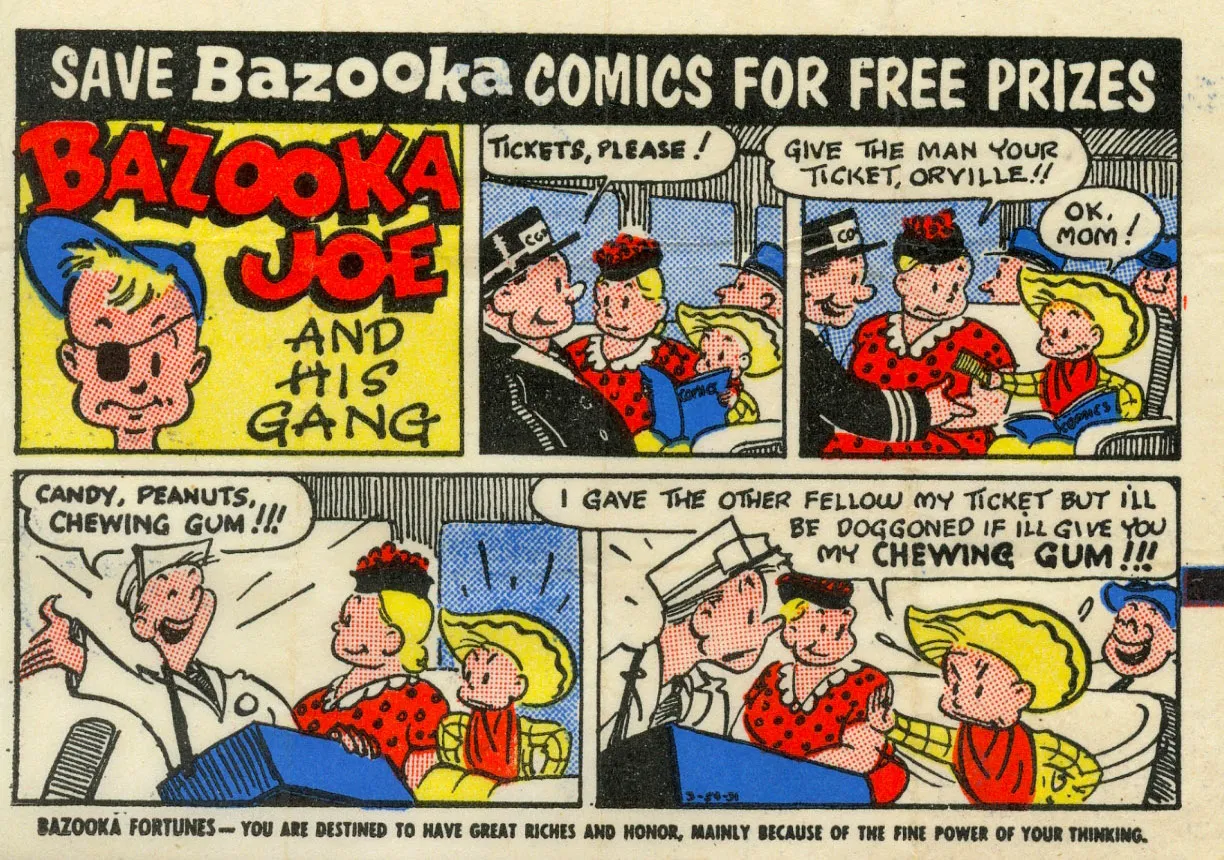
A play for ‘new-stalgia’
Nostalgia is a huge sales driver in the confectionery space.
In recent years — and especially through the uncertainty of the COVID-19 pandemic — nostalgic candy has taken off, Christopher Gindlesperger, senior vice president of public affairs and communications at the National Confectioners Association said. The NCA does not directly track sales of nostalgic candy brands, but he said that as people have increased their spending on confections in general, nostalgia has also expanded.
Because of the emotional relationship many consumers have with candy and sweets, the brands that make them have an especially close relationship with their consumers, Gindlesperger said.
“It's part of the magic of this industry,” he said. “And the companies, they make the products that really fit in the right place and fill that need on a human level for emotional well being.”
Few categories can utilize the spending pull of nostalgia in the same way as candy, Gindlesperger said. And consumers’ memories can put sales into overdrive. When the former New England Confectionery Co. gave its employees notice in 2018 that it was in danger of shutting down for financial reasons, sales of the company’s namesake Necco Wafers skyrocketed, with one online retailer reporting an immediate 50% jump in sales. The wafers, which had been manufactured since 1847, were a nostalgic staple, though not exactly a universally loved candy.
“It's part of the magic of this industry. And the companies, they make the products that really fit in the right place and fill that need on a human level for emotional well being.”

Christopher Gindlesperger
Senior vice president of public affairs and communication, National Confectioners Association
While many of its sales come from nostalgic adults, Gindlesperger said he sees Bazooka as an example of a brand going for what he calls “new-stalgia.”
“You base your operations around the great brand equity that you have, whether it's a specific product or a company in whole, and then take that and build around it, and bring the innovation in and products and packaging, to consumers,” he said. “Get them involved and take them on the journey with you.”
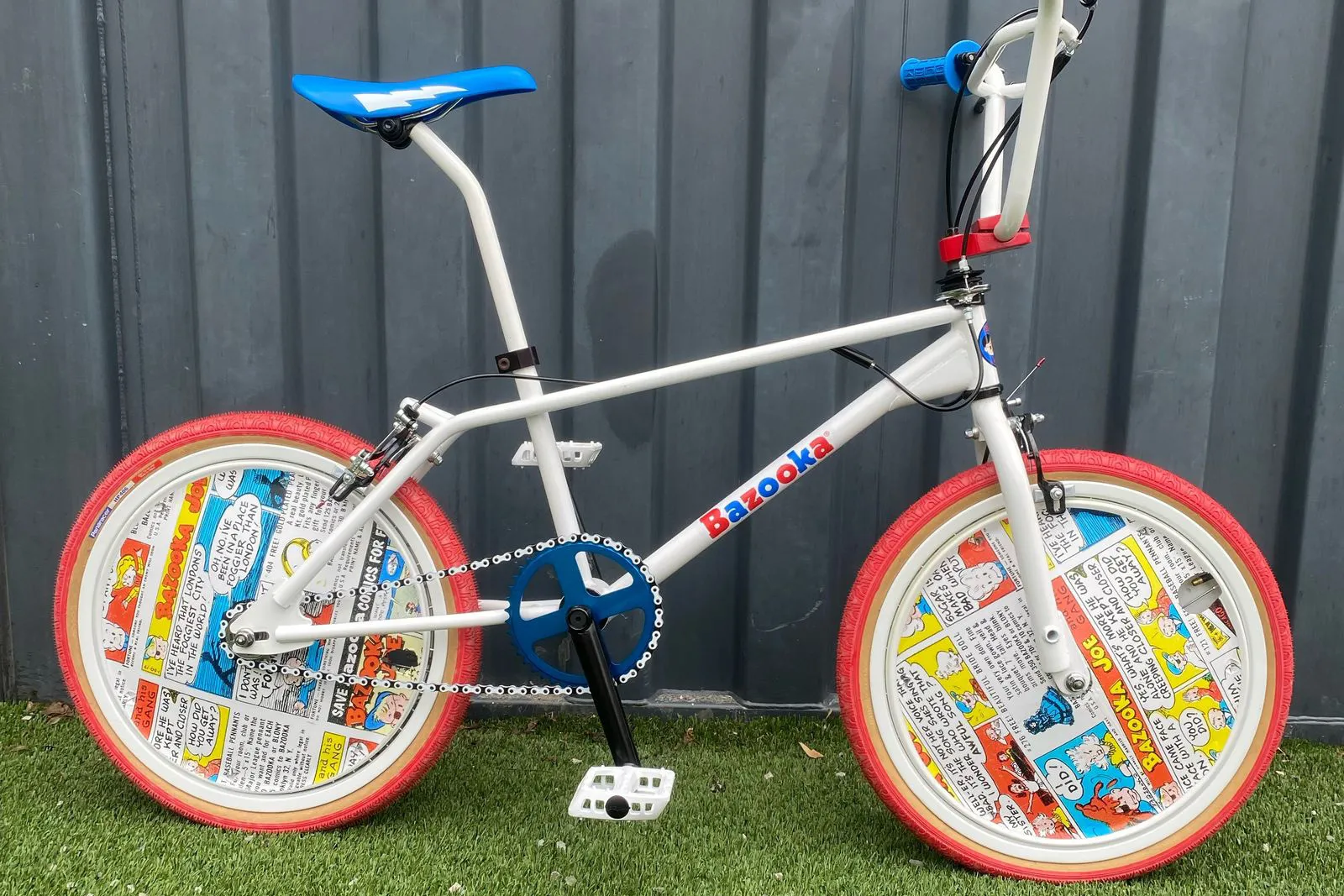
Nostalgia as a long-term strategy
It’s no surprise that nostalgia has been big among food and beverage brands in the recent past, said Shelley Balanko, a senior vice president at Hartman Group, which studies and analyzes U.S. food and beverage culture.
Looking back through the years, Balanko said, nostalgic brands tend to do well in times of uncertainty. They saw a bump during the Great Recession, the COVID-19 pandemic, and even as inflation rages.
“That’s what nostalgia is about: it's about creating comfort as well as connection,” she said. “Comfort is just like that: the emotion that you get through a certain sensory experience or through the memory that the nostalgic food experience is tied to. And then the connection is connection to oneself. Maybe a former version of yourself that wasn’t as stressed and freaked out.”
On its own, though, nostalgia may not be a sustainable strategy for company growth, Balanko said. If a favorite food or drink looks and tastes exactly the same in more modern times as it did generations ago, it will certainly attract some consumers looking to transport themselves back to easier times. But yesterday’s ingredients may not be what today’s consumers want — especially with products that could be higher in sugar, featuring more chemical-sounding ingredients, or with components that might be less sustainable or ethical. Marketing and messaging that was on target years ago might also be seen as tone-deaf today, she said.
Bazooka has been working to check some of these boxes, Bazooka’s Silberfarb said. The sugar-free varieties, the social media plays and the merchandising and marketing agreements have made the brand feel more current.
While nostalgic candy is a large category in confectionery, it is one that brands enter by choice. Some of today’s biggest brands — including Reese’s Peanut Butter Cups, which turn 95 this year, and Snickers, which first sold in 1930 — don’t position themselves along the nostalgic route. Balanko said that these brands are effectively evolving through the years, keeping the aspects that consumers have always loved, but adding new lines or innovation.
Silberfarb said that while Bazooka is currently in the nostalgic confection category, the brand hopes to maintain a slow evolution — and eventually see its 100th anniversary as a consumer favorite. She quickly summarized the brand’s long-term goal.
“It’s still maintaining that relationship,” Silberfarb said. “It's really beyond the bubble gum. That bubble gum is the product and the catalyst of what the experience is all about. But the equities of our iconic red, white and blue, Bazooka Joe, the comics — bringing that everywhere and using that with our fans.”



